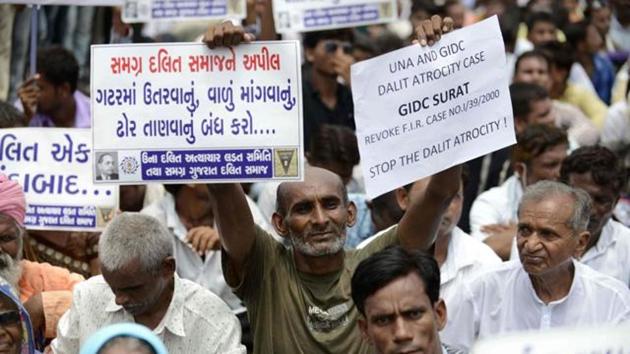The works of Ambedkar, Du Bois and Fanon reflect the common story of marginalisation across communities
The reason the three people become more relevant to our contemporary times suggests that we still hold age-old discriminations like caste, race, gender and sexuality close to our hearts and we are constantly on a mission to develop new models of suppression
The phenomenon of oppression has to be understood within the political categories of black and white, dominant and oppressed castes. To understand how race and caste operate in historical terms, one must look to the west, east and to the south, to the United States, to India and to Africa. This will help us contextualise the interrelated experiences of the marginalised.

American sociologist and civil rights activist, WEB Du Bois, declared that the problem of the 20th century was colour. In India, BR Ambedkar brought the discussion of caste into mainstream discourse and dedicated his life to the annihilation of the structures of the caste system. West Indian philosopher, Frantz Fanon, articulated the paradigm of the oppressed in a world dominated by the white race.
In 1943 and 1944, Du Bois wrote in his column in The New York Amsterdam News that “the greatest color problem in the world is that of India”. “Remember that we American Negroes are the bound colony of the United States just as India is of England.” This creates a parallel between the African American experience within the US and the Indian experience within colonised India, thus raising the possibility of solidarity building between these two communities, both of which face similar types of oppression. What Du Bois misses in his generalised and romanticised categorisation of the Indian experience as a colony of England, is the way in which the Dalit community is further reduced to the colonial subjectivity of a casteist society in which the Brahmins dominate.
Du Bois’ gaze towards the east suggests that he sought to show the interrelation of suffering using the examples of the experiences of black Americans and the Indian struggle. As a result of this relation, Du Bois received a somewhat unexpected response from the nationalist, Lala Lajpat Rai. Rai reduced Du Bois’ argument to the Hindu-Muslim binary, interpreting it through a Gandhian and Brahminical lens, which rejects British rule only to re-establish Brahminical hegemony over the untouchables of India. Rai, Du Bois’ primary link to India, was not the internationalist that Du Bois wanted him to be, argues literary scholar Dohra Ahmad.
By providing a nonconformist intervention to the Indian colonial problem, Ambedkar predicted the post-colonial and post-caste situation. Looking at the traditional caste bourgeoisie, Ambedkar debunked the dominant narratives about colonial slavery. Furthermore, he exposed the caste hierarchy, in which reverence to the Brahminical religion was the priority, second only to the colonial state.
Fanon posited that the aggressive project of delegitimising the values of the colonised community was to reduce the native’s values to “absolute evil”. Fanon’s reservations about appropriating Marxism and applying it to an African context were largely to do with the fact that Marxism ignores the importance of race, even class. Fanon writes: “In the colonies, the economic substructure is also a superstructure. The cause is the consequence; you are rich because you are white, you are white because you are rich. This is why Marxist analysis should always be slightly stretched every time we have to deal with the colonial problem.”
This argument was extended by Ambedkar in his thesis on Marx. Post-Ambedkarite thought follows Fanonesque sentiments, demanding that Brahmin/caste Hindu Marxism stretch Western European dialectical materialism in order to be relevant to the native caste situation in India.
If Du Bois, Ambedkar, and Fanon have to be thought of as movement-based actors who unified the global struggles for social justice, then the teleologies (the purpose for the emergence) of these figures need to be explained with empirical arguments. The reason the three people become more relevant to our contemporary times suggests that we still hold age-old discriminations like caste, race, gender and sexuality close to our hearts and we are constantly on a mission to develop new models of suppression — neoliberalism, market fundamentalism, cultural commodification, misrepresentation. Du Bois, Ambedkar and Fanon challenge the universal hegemonic pretensions of culture and civilisation. These ideals need to be collectively examined so as to forge a radical alliance of the oppressed.
Suraj Yengde is a WEB Du Bois non-resident fellow, Hutchins Center and associate, department of African and African American Studies, Harvard University
Twitter: @surajyengde
The views expressed are personal





